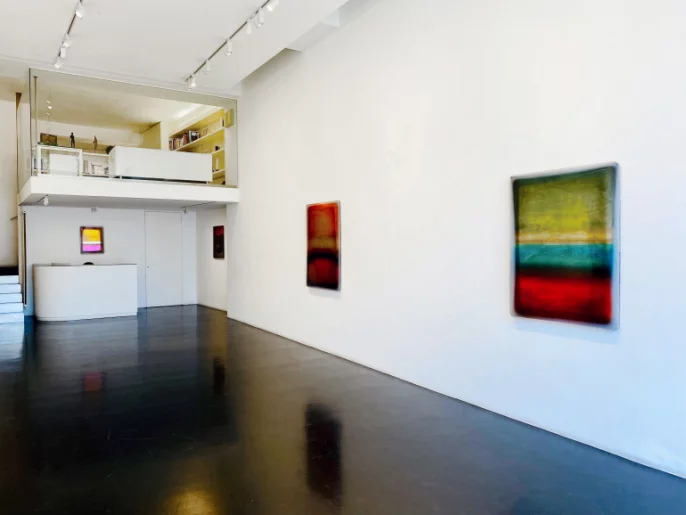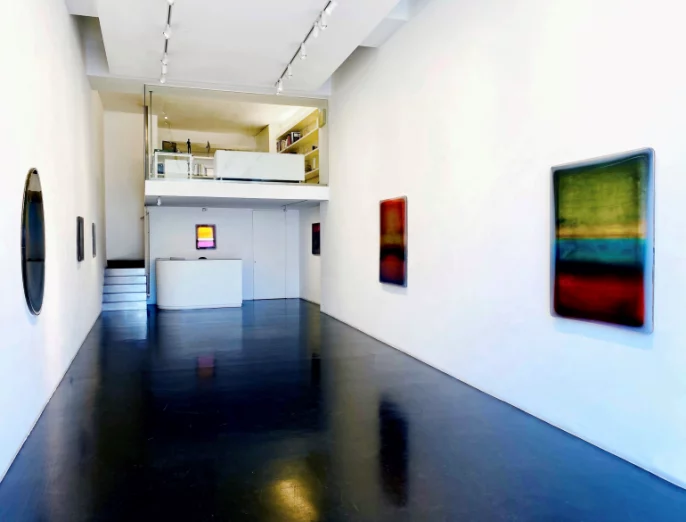Giovanni Castell
Solo Show
11.12.2022
What shall I love if not the Enigma?
“Who needs, and what can be the point and purpose of having, duplicates of a reality we already have before us? Who needs detached images of the sun, the stars, and the rest, when we can see these things already, and since nothing appears in the mirror which is not already there in the world to be seen without it? What end could be achieved by detaching appearances from the world and representing them in a reflecting surface – this escaped Socrates’ comprehension. And if all that mimesis entailed was an idle duplication of looks, his puzzlement about the status of art as so characterized was perfectly justified.”
Based on an initial and superficial interpretation, the words of the well-known art critic and philosopher Arthur C. Danto quoted above seem to contradict the notion held by many artists and currents in 20th century art history that art equals life. Upon closer examination, this aphorism is entirely consistent with the thought expressed by Danto: He emphasises that art, and thus the artist, must come into harmony with life by allowing both to become a single state, a single expression, but at the same time they must not be a pure, simplistic and slavish recreation of reality. Throughout his artistic career, Giovanni Castell – whether he was turning more towards the figurative or going through phases in which the image became less and less “tangible” and increasingly eluded explanation – always wanted to observe his surroundings with an enquiring eye and consequently interpret their existing dimension. We must therefore start from Castell’s penchant for observing the world, what happens in human time, and then reworking it visually and intellectually. Indeed, we must not forget that Castell is a photographer, or rather that he has used photography to give narrative expression to another universe that does not deny the visual effect, but manipulates it, reinterprets it and triggers an ongoing dialogue between the perceptible and the imaginable. References in this sense can, in my opinion, already be seen abundantly in the Aporie series. In it, the German artist identifies one or more subjects by de-contextualising them, and then subsequently re-contextualises them in a different and new perceptive entity that takes on a dimension of temporal suspension, all undertaken by making use of a special process of digital editing. The reference and homage intended by Giovanni Castell to Edward Hopper and, I would say, to the American Scene in general, where intimate, existential atmospheres unite and mix like pigments with the interior living spaces, open places and landscapes, cannot and indeed should not escape an attentive and receptive eye. Time seems to have come to a standstill, to have been removed, or never existed, not contemplated, suggesting an intimate, hidden feeling, where humanity no longer seems to find a foothold to which it can cling in order to resist. Scenarios that also remind us of De Chirico’s famous piazzas: desolate places, seemingly abandoned, where the human presence appears only occasionally; a bewilderment where wonder and consternation reign at the same time, giving form and life to a metaphysical world. Enigmatic choices in which Castell’s iconography consists of these elements and also, perhaps inevitably, of German Neue Sachlickeit (New Objectivity): not in nostalgia, but in the decision to want to capture the moment, the perception of the moment, and above all in harmony with the alienating, paralysing and moribund lack of communication of our modern times. “Et quid amabo nisi quod aenigma est?” (What shall I love if not the enigma?). This quote comes from Giorgio De Chirico and he inscribed it on the frame of a self-portrait from 1911, in which he portrayed himself in the typical pose of the philosopher Friedrich Nietzsche. A poetic, philosophical image, but one that wants to emphasise the will to set out on the path that leads to discovering the meaning of life. An existential question to which there may be no answer, but it is certainly the path that Giovanni Castell has followed from the beginning; a quest that we find even more evident in his latest work, where the artist has succeeded in “transfiguring” photography into painting. The first thought would be to compare him to an alchemist, although this would prove incomplete and, above all, out of date, given the materials and technical means used. History in general and, as we shall see, art history as well, are themes and subjects that Giovanni Castell knows well and that are often found as quotations in his works, but realised with contemporary materials and techniques. Plexiglass becomes a kind of container, a casket on whose front side Castell silk-screens the image he has created and digitally re-elaborated, while on the reverse side, the artist has had the fascinating intuition of applying gold leaf at some points and silver leaf at others. A technique, this latter, with very ancient references, but here reinterpreted and brought up to date, also thanks to the final use of resin, which covers the entire surface, creating a sort of inviolable and perpetual jewellery box. Colour becomes the protagonist, also absorbing the intrinsic and innate light emanating from the leaf behind, so much so as to release luminescence and diffuse it over the entire surface. With these works, Giovanni Castell seems to want to bring light and colour into a world that is regrettably increasingly dark, gloomy, where human identity is constantly undermined: to emphasise the state of loneliness of the individual within society, which every day becomes more and more technological and connected, but less and less communicative and relational. According to the Kabbalah, in the age before creation, the profusion of divine sparks shattered the vessels in which they were contained and so the sparks fell upon all things in the world. Here they are trapped until they are released by a blessing. Light stands for hope, life and redemption, just as Castell wants to show us with his works: a sense of confidence and faith, trusting in a kind of concrete utopia, which will finally bring the wind of true and just existence.
“As I see it, photography has done its best to continuously eliminate reality. It has allowed it to disappear. Before we are able to experience a particular landscape in the flesh, we already know it from photographs. We have lost our ability to see things consciously. In an age where we are bombarded daily by thousands of digital images, no sooner seen, already forgotten, the individual photographic image loses its meaning. Photography has lost its magic. I want to move on and reach a new technical and artistic dimension.” With these words, Giovanni Castell perfectly expresses his thinking and the direction of his quest, which goes beyond “simple” photography, making use of digital processing and digital painting, combining pictorial and photographic processes, archaic and contemporary materials, thus giving shape to an art of the present, which does not disregard the past and hopes for a different tomorrow. As we have emphasised, colour, together with matter, takes on the role of the interpreter of the scene, appearing and showing itself to the eyes of the viewer deliberately more as painting than as a photographic element. A reference to Mark Rothko and a statement of inevitable admiration for him, made evident by the distribution of colour with horizontal “photographic brushstrokes”, which Castell arranges on the surface, achieving fascinating effects of interpenetration between colour, space and matter. Lines, horizontal bands, of different colours, play and intermingle in innumerable variations, undefined in their existence, but blurring and creating an indefinite floating effect. The tonal areas widen, causing a sensation of advancing and then retreating. The human figure has absented itself, abandoned the stage, leaving the field to colour (Color Field) and luminescence, which articulate themselves, taking on the appearance of ethereal theophanies. “The fact that people break down and cry when confronted with my pictures shows that I can communicate those basic human emotions.” Rothko’s words are illustrative of how silence and meditation are decisive in his quest, but also how they are decisive for coming into harmony with all of Giovanni Castell’s quest. Certainly the work in which silence, recollection and spirituality are equally substantial, is that of Giorgio Morandi, who in his still lifes, seems to have stopped time in the relationship between subject and object. Bottles, cups, vases, carafes, are also introduced by Castell, amidst the textures of his colour fields, which by his use of resin, appear as blurred, out of focus images, as happens with distant memories that have lost their sharpness. Distant memories, personified by timeless objects, but which take on the inestimable value of what T.S. Eliot and later Eugenio Montale identified as the objective correlative, i.e. of events, situations, or as in this case, objects, which have the purpose of suggesting and evoking “a precise and particular emotion.” If Nietzsche claims that nothing is art unless one defies rational explanation and unless its meaning somehow escapes us, we can affirm without hesitation that Giovanni Castell’s creative expression is heading precisely in this direction. With his art, in fact, he is trying to reproduce and thus make visible the state of uncertainty that one experiences while dreaming.
Alberto Mattia Martini
Related Artists
Keep me updated
Subscribe to our monthly newsletter with all the exhibitions, artist highlights and special events



